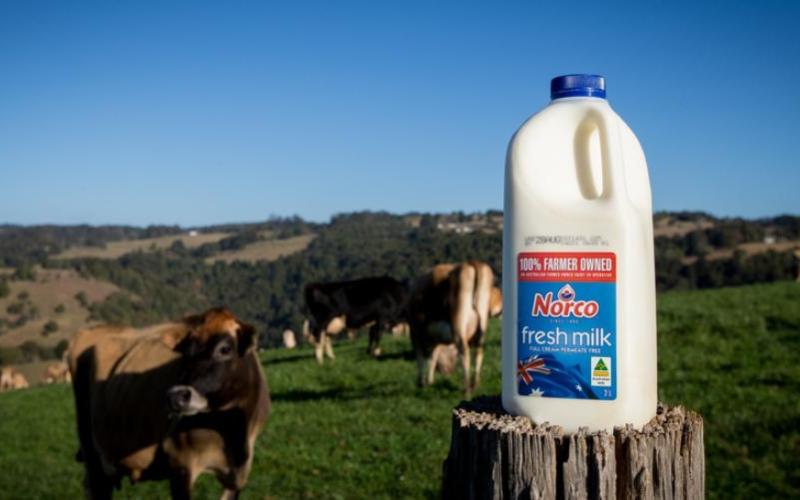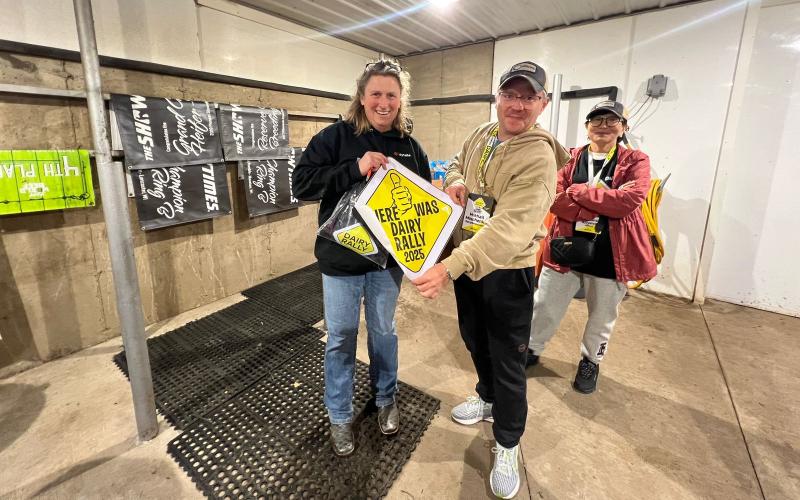USDA Offers 90% Compensation for Bird Flu Losses in Dairy Herds
Sourse: The DairyNews
The U.S. Department of Agriculture (USDA) will compensate dairy farmers for 90% of the value of milk lost due to H5N1 avian flu infections in their herds, announced Agriculture Secretary Tom Vilsack.

This measure is the latest in a series of financial assistance programs aimed at combating the H5N1 virus.
"We aim to support our producers in every possible way as they confront this emerging animal health issue," Vilsack stated.
Since the first confirmed case of H5N1 in dairy cattle in Texas three months ago, the virus has spread to 132 dairy herds across 12 states, from Idaho to North Carolina. Mild cases of bird flu have also been reported among three dairy farm workers.
Dairy farmers can apply for payments through the Emergency Livestock Assistance Program (ELAP) starting Monday, when the USDA will publish the regulation authorizing the aid. The payments will cover 90% of the value of reduced milk production per cow for 28 days, based on the U.S. all-milk price, a monthly national average.
Bird flu typically affects older lactating cows, causing symptoms like fever, loss of appetite, and reduced milk output. USDA scientists estimate that about 10% of cows in an infected herd fall ill, with a 2% mortality and culling rate. Vilsack noted the challenge of determining the exact reason for cows being sent to slaughter, hence the focus on compensating for reduced milk production.
This initiative adds to the USDA's array of financial support to tackle the H5N1 virus. Up to $28,000 is available over three months for farms with infected herds to enhance biosecurity, provide protective equipment for workers, and cover veterinary and testing costs. Farms without the disease can receive up to $1,500 for biosecurity improvements and up to $2,000 for testing cows for the virus.
Additionally, Ohio and North Carolina have joined Kansas, Nebraska, New Mexico, and Texas in a pilot program for voluntary weekly testing of milk from bulk coolers for the H5N1 virus. Farms testing negative for three consecutive weeks are exempt from a USDA requirement to test cattle for bird flu before interstate shipments.
The USDA aims to "isolate and burn out this disease" to prevent its spread, Vilsack emphasized.
ELAP, established in 2008, covers losses to livestock, honeybees, and farm-raised fish from disease and adverse weather. There is no payment cap per producer, but eligibility is limited to those with an adjusted gross income under $900,000 per year, according to an ELAP fact sheet.
Bird flu outbreaks have surged among domestic flocks this spring, with 8.8 million birds dying in April and 5.9 million in May. The death toll has decreased to 460,000 birds this month, according to USDA data. Since the H5N1 virus emerged in February 2022, 97.2 million birds in domestic flocks, mainly egg-laying hens and meat turkeys, have died from the virus or in preventive cullings.
"We aim to support our producers in every possible way as they confront this emerging animal health issue," Vilsack stated.
Since the first confirmed case of H5N1 in dairy cattle in Texas three months ago, the virus has spread to 132 dairy herds across 12 states, from Idaho to North Carolina. Mild cases of bird flu have also been reported among three dairy farm workers.
Dairy farmers can apply for payments through the Emergency Livestock Assistance Program (ELAP) starting Monday, when the USDA will publish the regulation authorizing the aid. The payments will cover 90% of the value of reduced milk production per cow for 28 days, based on the U.S. all-milk price, a monthly national average.
Bird flu typically affects older lactating cows, causing symptoms like fever, loss of appetite, and reduced milk output. USDA scientists estimate that about 10% of cows in an infected herd fall ill, with a 2% mortality and culling rate. Vilsack noted the challenge of determining the exact reason for cows being sent to slaughter, hence the focus on compensating for reduced milk production.
This initiative adds to the USDA's array of financial support to tackle the H5N1 virus. Up to $28,000 is available over three months for farms with infected herds to enhance biosecurity, provide protective equipment for workers, and cover veterinary and testing costs. Farms without the disease can receive up to $1,500 for biosecurity improvements and up to $2,000 for testing cows for the virus.
Additionally, Ohio and North Carolina have joined Kansas, Nebraska, New Mexico, and Texas in a pilot program for voluntary weekly testing of milk from bulk coolers for the H5N1 virus. Farms testing negative for three consecutive weeks are exempt from a USDA requirement to test cattle for bird flu before interstate shipments.
The USDA aims to "isolate and burn out this disease" to prevent its spread, Vilsack emphasized.
ELAP, established in 2008, covers losses to livestock, honeybees, and farm-raised fish from disease and adverse weather. There is no payment cap per producer, but eligibility is limited to those with an adjusted gross income under $900,000 per year, according to an ELAP fact sheet.
Bird flu outbreaks have surged among domestic flocks this spring, with 8.8 million birds dying in April and 5.9 million in May. The death toll has decreased to 460,000 birds this month, according to USDA data. Since the H5N1 virus emerged in February 2022, 97.2 million birds in domestic flocks, mainly egg-laying hens and meat turkeys, have died from the virus or in preventive cullings.
Key News of the Week














